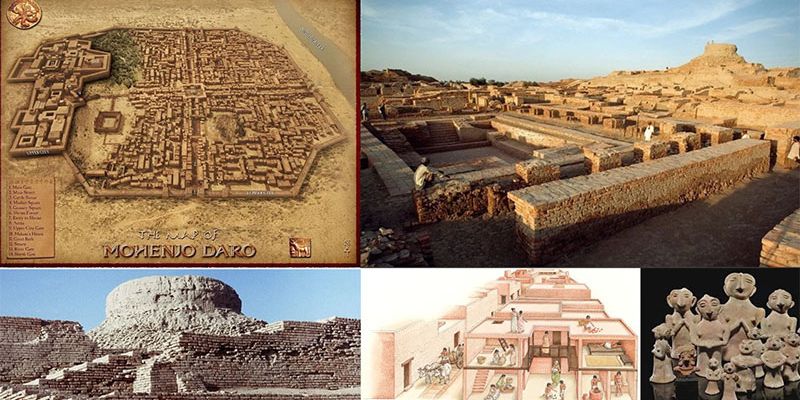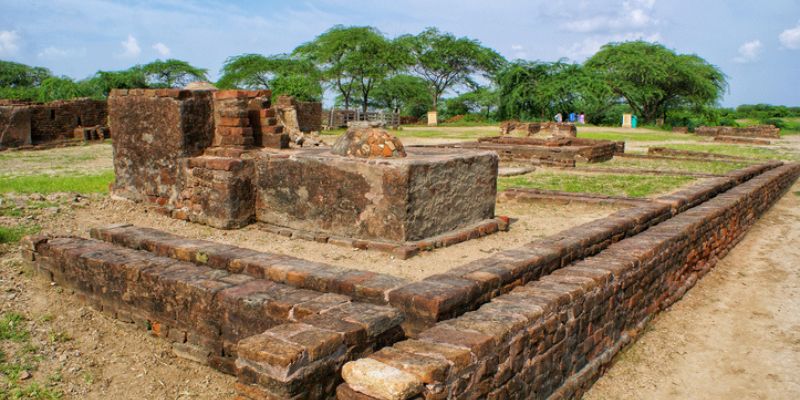8 Legendary Lost Cities in India: Discover the Fascinating History
Jan 26, 2024 By Juliana Daniel
India is a land rich in history and culture, and it's no surprise that many legendary lost cities are scattered throughout the country. These ancient civilizations were once thriving hubs of trade, religion, and art but were eventually abandoned or forgotten over time.
However, archaeological discoveries and research have rediscovered these lost cities and continue to fascinate us today. In this article, we will look closer at 8 legendary lost cities in India that were later discovered.
Harappa and Mohenjo-Daro: The Indus Valley Civilization
The lost cities of Harappa and Mohenjo-Daro, located in the Indus Valley Civilization, are fascinating archaeological sites that give valuable insights into ancient civilizations. These cities were discovered in the 1920s and 1930s and have since been extensively excavated, revealing a highly advanced urban civilization that thrived over 4,000 years ago.

The meticulous planning and engineering evident in these cities, such as advanced drainage systems and well-designed houses, highlight the sophistication of the Indus Valley people. The discovery of seals and scripts at these sites has also contributed to our understanding of their language and trade networks.
The significance of Harappa and Mohenjo-Daro lies in their role as major centers of commerce, culture, and governance in the ancient world.
Hampi: The Forgotten Empire
Hampi, a UNESCO World Heritage in Karnataka, is another forgotten empire of great historical significance. Once the capital of the Vijayanagara Kingdom, Hampi grew from the 14th to 16th centuries and was known for its grandeur and opulence.
The city was decorated with magnificent temples, palaces, and marketplaces, showcasing the architectural brilliance of the Vijayanagara rulers. The ruins of Hampi offer a glimpse into the rich cultural and religious heritage of the empire, with intricate carvings depicting scenes from Hindu mythology.
Hampi's significance is that it represents a prosperous and vibrant civilization crucial in shaping South Indian history.
Dholavira: The Grandeur of Gujarat
Dholavira, located in present-day Gujarat, is one of the ancient cities in India and the most well-preserved archaeological site. Excavations at Dholavira have revealed a meticulously planned city with sophisticated water management systems, fortified walls, and an impressive range of public buildings.
The discovery of unique features like a large stadium and a signboard-like structure with Indus script has sparked great interest among archaeologists and historians.
Dholavira's significance lies in its contribution to our knowledge of the Indus Valley Civilization and its complex urban planning, social organization, and trade networks.
Lothal: The Port City of the Indus Valley
Lothal, located in present-day Gujarat, India, is a significant city of the Indus Valley Civilization. This ancient port city has provided archaeologists with valuable insights into the trade and maritime activities of the Indus Valley people. The remains of a dockyard, warehouses, and a sophisticated drainage system suggest that Lothal was a thriving trading center.

The significance of Lothal lies in its strategic location near the Gulf of Khambhat, which allowed it to serve as a gateway for trade between the Indus Valley and the Arabian Sea. Excavations have uncovered artifacts such as beads, pottery, and seals that indicate long-distance trade with regions as far as Mesopotamia and Egypt.
Kalibangan
Kalibangan is an old city located in present-day Rajasthan, India. It was one of the major town settlements of the Indus Valley Civilization, which prospered around 2500-1900 BCE. Excavations at Kalibangan have revealed well-planned streets, houses, and a sophisticated drainage system, providing evidence of a highly organized urban society.
The discovery of a fire altar and a plowed field suggests agricultural practices, while the presence of pottery and jewelry indicates a thriving craft industry. These findings have helped archaeologists understand the Indus Valley Civilization's social, economic, and cultural aspects.
Fatehpur Sikri
Fatehpur Sikri, located in present-day Uttar Pradesh, India, was once the Mughal Empire's capital during Emperor Akbar's reign. This fortified city was built in the 16th century and is a masterpiece of Mughal architecture and design. The city was abandoned shortly after its completion due to water scarcity, but its magnificent palaces, mosques, and courtyards still stand today.
The significance of Fatehpur Sikri lies in its architectural marvels, which blend elements of Persian, Islamic, and Indian styles. The intricate carvings, delicate marble work, and grandeur of the buildings reflect the artistic and cultural achievements of the Mughal Empire. Fatehpur Sikri is a UNESCO World Heritage place and fascinates tourists worldwide.
Khajuraho Temples
The Khajuraho Temples, on the other hand, are a group of Hindu and Jain temples in Madhya Pradesh, India. Built by the Chandela dynasty between the 10th and 12th centuries, these temples are renowned for their intricate sculptures and architectural beauty. The temples depict various aspects of life, including gods and goddesses, celestial beings, animals, and humans engaged in different activities.
The sculptures provide valuable insights into the religious beliefs, social customs, and artistic skills of the Chandela dynasty. Moreover, the temples also reflect medieval India's rich cultural and architectural heritage.
Mandu
Mandu, located in present-day Madhya Pradesh, India, is a fortified city that was once the Malwa Sultanate's capital. This city was built between the 14th and 16th centuries and is known for its impressive architecture, including palaces, mosques, and tombs. The city's strategic location atop a plateau provides panoramic views of the surrounding landscape.
The significance of Mandu lies in its rich history and architectural heritage. The city showcases the fusion of Hindu and Islamic architectural styles, with structures like the Jahaz Mahal and Hoshang Shah's Tomb being prime examples.
Mandu's historical importance as a center of culture, art, and learning during the sultanate period makes it a fascinating destination for history enthusiasts.
Exploring these lost cities provides a glimpse into the lives and achievements of ancient civilizations. Their significance lies in their architectural wonders and the stories they tell about the trade, culture, and advancements of their respective eras.
We can better understand our shared human history by studying and preserving these archaeological sites.
Conclusion
These legendary lost cities hold immense historical significance and continue to intrigue us with their stories even after being rediscovered centuries later. They remind us of our rich heritage and offer glimpses into civilizations that have long been forgotten but are now brought back to life through archaeological discoveries.







